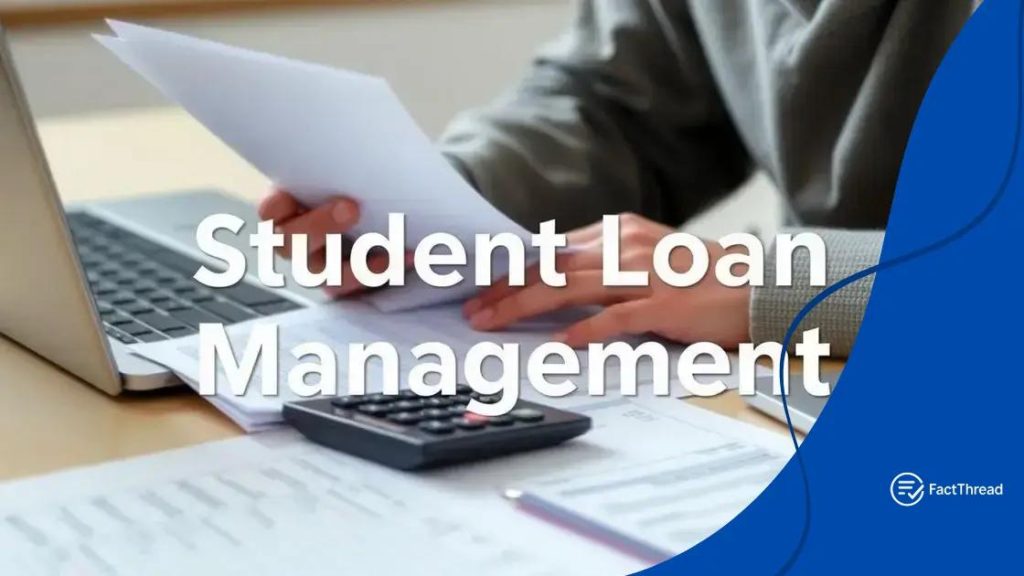Student loan interest rate changes announced: what to expect

Student loan interest rate changes can significantly impact borrowers by increasing monthly payments, highlighting the importance of budgeting and exploring repayment options to manage these financial obligations effectively.
Student loan interest rate changes announced could significantly influence your financial landscape. Are you prepared for how it might alter your budget and repayment options? Let’s delve into what this means for you.
Understanding the recent student loan interest rate changes
Understanding the recent student loan interest rate changes is important for anyone currently enrolled or planning to take out a loan. These adjustments can impact your monthly payments and total amount owed. Let’s explore how these changes might affect borrowers.
What Are the Current Changes?
The latest adjustments in interest rates can vary depending on whether you have federal or private loans. For federal loans, interest rates are set annually and can influence your overall repayment strategy. If you hold a private loan, your rates may change according to your lender’s policies.
Impact on Current Borrowers
For those already repaying their student loans, an increase in interest rates means higher monthly payments. You might find it challenging to manage these payments alongside your everyday expenses. Here are some ways these changes may affect you:
- Higher overall repayment costs.
- Possibly longer repayment terms if refinancing is needed.
- Less financial flexibility for other necessities.
New borrowers should be aware that the current rates could dictate which loan options are most suitable based on your financial situation. Understanding these loans can help you make informed choices that align with your long-term financial goals.
Furthermore, it is wise to stay updated on government announcements regarding interest rates. The federal government regularly evaluates and adjusts its rates, which may provide opportunities for refinancing or consolidating existing loans to obtain lower rates.
Finally, as borrowers, it’s crucial to comprehend how these shifts can affect your financial future. Knowledge of your loan terms and current interest rates allows for better financial planning.
How it affects current borrowers
The recent changes in student loan interest rates can significantly impact current borrowers. Understanding these effects is crucial to managing your finances effectively. When interest rates rise, the cost of borrowing increases, which can lead to higher monthly payments and more interest over the life of the loan.
Monthly Payment Implications
For borrowers with variable interest rates, fluctuations in interest can directly affect your monthly obligations. With a higher interest rate, you may notice a significant increase in your monthly payments. This can strain your budget, making it essential to reassess your financial goals.
Refinancing Considerations
As interest rates change, some borrowers may consider refinancing their loans. This can be a beneficial move if you can secure a lower rate, but it’s crucial to weigh the costs involved. Here are some factors to consider:
- Fees associated with refinancing.
- Potential for lower monthly payments.
- The impact on your credit score.
Making informed choices about refinancing can lead to significant savings. Additionally, many borrowers might feel the pressure to pay off their loans quicker to avoid accumulating more interest.
Furthermore, higher interest rates can limit financial freedom, forcing borrowers to allocate more of their income toward loan payments. Reducing discretionary spending may become necessary to manage increased loan costs. Understanding these pressures can help you plan adjustments in your budget.
Lastly, staying informed about any potential changes in federal student aid programs is also essential. If new legislation arises, it may present options such as loan forgiveness or alternative repayment plans that can help alleviate the burden of high interest payments.
Implications for future loans

The implications of recent student loan interest rate changes extend beyond current borrowers. Future loan applicants must understand how these shifts may affect their financial decisions. As rates rise, the overall cost of borrowing could increase, making loans more expensive in the long run.
Higher Loan Costs
New borrowers should be aware that higher interest rates lead to larger monthly payments. This can affect how much you decide to borrow. It’s essential to evaluate your budget carefully before applying for a loan. Here are some key points to keep in mind:
- The total amount paid over the life of the loan increases with higher interest.
- Monthly payments become less manageable with rising rates.
- Loan amounts may need to be reduced to accommodate higher costs.
In addition, if you are considering taking out federal loans, it’s vital to understand the fixed versus variable rates. While fixed rates offer consistency, variable rates can increase, adding uncertainty to your repayment plans. As rates fluctuate, borrowers should seek the most favorable loan terms available.
Alternative Financing Options
Given the changing landscape, many students explore alternative financing options. This might include scholarships, grants, and work-study programs. These resources can help minimize the need for loans:
- Scholarships can significantly reduce the amount you need to borrow.
- Grants often do not need to be repaid, lessening debt burdens.
- Work-study opportunities can provide income while studying.
Moreover, understanding the terms and conditions of private loans becomes increasingly important. Many private lenders offer different rates and terms than federal loans. Always review the fine print to avoid unexpected costs.
It’s crucial for future borrowers to stay informed and plan appropriately. Knowledge about current rates and market trends can help you make decisions that align with your financial goals.
Alternatives to consider with increased rates
As interest rates on student loans rise, it’s essential to explore alternatives to traditional borrowing. Knowing your options can help lighten the financial burden. Exploring scholarship opportunities can be one of the best ways to minimize or eliminate student debt.
Scholarships and Grants
Scholarships and grants are excellent alternatives because they do not require repayment. Many organizations, schools, and private foundations offer funding based on various criteria, such as academic achievement, community service, or financial need. Here are some important points about scholarships and grants:
- They can cover partial or full tuition expenses.
- Some are awarded based on specific criteria, like major or demographics.
- Many scholarships are available for students at all education levels.
Additionally, researching local organizations can uncover lesser-known scholarship opportunities. Many students overlook funding available in their own communities.
Federal Work-Study Programs
Another alternative is participating in federal work-study programs. These programs allow students to work part-time while studying, which can help cover education costs and reduce the need for loans. Balancing work and study requires good time management skills, but many students find the experience rewarding.
Payment Plans
Another option to consider is flexible payment plans offered by many universities. These plans often allow you to pay tuition in smaller, manageable installments rather than a lump sum. This can help ease the financial strain and make budgeting more straightforward.
It is also wise to closely review your existing loans. If you are feeling overwhelmed, inquire about refinancing options. While it may seem daunting, refinancing could lead to lower payments or better rates, particularly if your credit score has improved since you first took out your loans.
By considering these alternatives, you can create a multi-faceted approach to managing your education costs. Staying informed about different options can empower you to make the best financial choices moving forward.
Tips to manage your student loan repayments
Managing your student loan repayments can feel overwhelming, especially with changing interest rates. However, with some practical strategies, you can make the process easier. Understanding your repayment options is the first step. Knowing whether you have a fixed or variable interest rate will help you plan your budget effectively.
Create a Budget
Creating a budget is essential for managing loan repayments. Track your income and expenses to see where your money goes. This will help you identify areas where you can cut back. Keep these tips in mind:
- List all monthly earnings and expenses.
- Set aside money specifically for loan payments.
- Use apps or spreadsheets to keep track of your budget.
By having a clear budget, you will avoid missing payments and accumulating interest charges, helping you stay on top of your loans.
Consider Automatic Payments
Another great option is to set up automatic payments. This helps ensure that your payments are made on time each month. Many lenders even offer a discount on your interest rate if you enroll in auto-pay. This can reduce the overall cost of your loans.
Explore Repayment Plans
Explore different repayment plans that may work for your situation. Federal loans offer various plans, including:
- Standard Repayment Plan
- Income-Driven Repayment Plans
- Graduated Repayment Plans
Each plan has its advantages, so it’s important to review which one matches your financial situation.
Stay proactive about your loans. Regularly reviewing your account statements and communicating with your lender can help you stay informed. If you encounter financial difficulties, don’t hesitate to discuss alternative options or deferment programs with your lender.
By following these tips and staying organized, you can manage your student loan repayments effectively and reduce financial stress.
FAQ – Frequently Asked Questions about Student Loan Management
What should I do if I can’t make a loan payment?
If you’re unable to make a payment, contact your lender immediately to discuss your options, such as deferment or alternative repayment plans.
How can I lower my student loan interest rate?
You may lower your interest rate by enrolling in automatic payments or refinancing your loans if you’re eligible.
Are there any scholarships available after I’ve started college?
Yes, many organizations offer scholarships throughout the academic year, so always keep an eye out for new opportunities.
What is the difference between federal and private student loans?
Federal loans typically offer lower interest rates and more flexible repayment options compared to private loans, which may have variable rates and fewer protections.